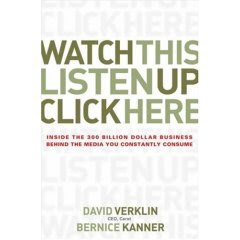 UC Davis economist Gregory Clark bills his new book A Farewell to Alms (Princeton) as "a brief economic history of the world." Its Darwinian thesis holds that the Industrial Revolution was sparked and caught on in England because its people descended from the upper classes, which over hundreds of years had survived at higher rates than the lower classes. As a result, upper class values also survived and became the basis for a culture that was conducive to an industrialized society. (See the NYT for more on this.)
UC Davis economist Gregory Clark bills his new book A Farewell to Alms (Princeton) as "a brief economic history of the world." Its Darwinian thesis holds that the Industrial Revolution was sparked and caught on in England because its people descended from the upper classes, which over hundreds of years had survived at higher rates than the lower classes. As a result, upper class values also survived and became the basis for a culture that was conducive to an industrialized society. (See the NYT for more on this.)
The key problem here is the ample evidence that our happiness depends not on our absolute level of well-being, but instead on how we are doing relative to our reference group. Each individual -- by acquiring more income, by buying a larger house in a nicer neighborhood, by driving a more elegant car -- can make him- or herself happier. But happier only at the expense of those with less income, meaner housing, and junkier cars. Money can buy happiness, but that happiness is transferred from someone else, not added to the common pool.
Since we are for the most part the descendants of the strivers of the preindustrial world, those driven to achieve greater economic success than their peers, perhaps these findings reflect another cultural or biological heritage from the Malthusian era. The contented may well have lost out in the Darwinian struggle that defined the world before 1800. Those who were successful in the economy of the Malthusian era could well have been driven by a need to have more than their peers in order to be happy. Modern man might not be designed for contentment. The envious have inherited the earth.


















